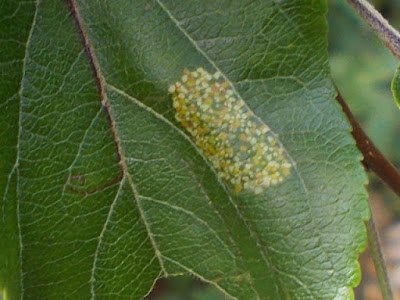A very interesting walk can be taken from Byfield via 'Muddy Lane' (more officially known as Pit Lane) to Byfield Pool and Boddington Reservoir. It is a walk I have enjoyed many times over the years but yesterday Chris and I, together with our friend Lynda, made the journey in pursuit of a clump of orchids.
Lynda had located them a few days previously following a tip from 'Pom' Boddington (whose surname, incidentally, has nothing to do with Boddington Reservoir). Having walked a couple of hundred yards along Muddy Lane we turned south-west to follow the track-bed of the Stratford-upon-Avon and Midland Junction railway. It was a locally valuable but generally uneconomic line which, having left Byfield continued, via Aston-le-Walls and Fenny Compton, to Stratford. There was a tiny halt at Aston-le-Walls from 1910 to 1953 which appears to have been mostly used for the transportation of sheep and cattle.
 |
One of the last times the track was used was for a specially organised tour,
here seen near Aston le Walls. Date unknown.
|
The line was single track and therefore our path was narrow. Nevertheless a steady stream of walkers has kept this (unofficial) footpath open and clear of brambles, etc. Few plants of interest were noted, the most exciting being a few specimens of the foul-smelling Black Horehound, Ballota nigra and some spikes of Weld, Reseda luteola.
 |
Black Horehound plants were present here and there
beside the old track. 28 July, 2020 |
 |
Broad-leaved Helleborine on the edge of Parson's
Spinney, near Byfield. 28 July, 2020
|
We discovered ten spikes but there is little doubt that a careful examination would have revealed several more. Lynda told us that she had noticed some growing in an adjacent cornfield - a surprising habitat.
Botanically this is a little-known area and an observant botanist could possibly find many species of more-than-usual interest.
Thanks to Lynda we had a very enjoyable walk and I returned well pleased. Once home I sent the record off to Brian Laney, Northamptonshire County Botanical Recorder.







































